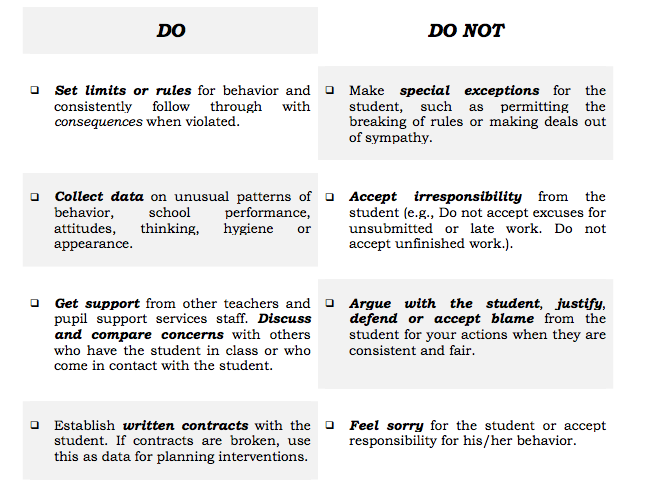Teaching Strategies for Helping Students From Vulnerable Homes

What role should teachers play in students’ lives outside of the classroom? When and how can a teacher intervene? Which laws permit teacher and school intervention?
Gauging when to intervene and what boundaries must not be crossed if you suspect that a student is struggling due to outside factors can be a tricky task. Teachers who create safe classroom environments can proactively support the whole child by preventing school bullying and assisting students who have difficult home lives. By incorporating the strategies outlined below into your teacher toolbox, you can support students with difficult life situations.
Helping Students from Vulnerable Homes
“If you told an administrator that you suspected one of your students was being abused at home and the administrator said he or she would handle it, do you need to do anything else?”
—Alternate Route Teacher
Home issues are prevalent in any school or neighborhood. In a typical classroom, students can be children of alcoholics or have no adult supervision after school. Students’ difficult home lives typically affect their school performance and classroom behavior.
If you suspect your student is from a vulnerable family, consider implementing these research-based behavioral management rules and guidelines:
 Source: Scope of Services For Building-Based I&RS Teams[/caption]
Source: Scope of Services For Building-Based I&RS Teams[/caption]
The NJ Department of Education requires anyone with reasonable cause to believe that a child is being abused or neglected to notify the New Jersey Department of Human Services’ Division of Youth and Family Services (DYFS). As adults who spend the most time with students outside of the home, teachers are well-positioned to help the State protect them—especially when they receive little to no parent supervision.
To submit a report with the NJ Department of Education, you can file a report about any incidents or concerns with your school district. Each school district is required, by law, to have a liaison with DYFS. After the report has been approved, DYFS can also provide classroom management tools and resources to teachers working with abused students.
Helping Students Who Face Bullying or Harassment
“If you noticed that a student was being repeatedly teased and taunted by other students, in the hallways between classes, for example, but the student never complained to you about it, should you do anything?”
—Alternate Route Teacher
Research has shown many students who are targeted by bullies hesitate to report their situation because they fear retaliation, or believe that nothing will be done. Teachers can help put a stop to bullying by encouraging students—both victims and bystanders—to speak up.
Prevention is key for bullying. You can create a safe and healthy classroom environment by getting to know your students individually and collectively, and setting rules for the classroom that reinforce the consequences of bullying. This will allow your students moments to be emotionally open.
Check your school’s bullying policy. By law, schools are required to publicly post their bullying policies.
Provide continued support to students who have been involved in bullying. Both the bully and victim will require immediate observation after filing a report. Well after filing a bullying report, it is good practice for teachers to meet both students separately and check in on their progress.
Overwhelming research supports the premise that students’ home lives are largely connected to their school lives. For example, students from vulnerable homes can channel emotional distress into bullying or they can be targeted by bullies. Should intervention be necessary, the focus should not be on the student’s family circumstances, but on how to help and improve the student behavior despite his or her situation. Be mindful about approaching vulnerable students with a holistic mindset, not with a one-sided perspective based on prior judgments and stereotypes.
Teachers who report students dealing with difficult life situations provide them with the opportunity to gain insight into a new reality devoid of dysfunction, where they can learn how to healthily cope with emotional distress, and possibly avoid or exacerbating the onset of mental health issues.
Share in the comments any experiences you’ve had teaching students who’ve been bullied or abused.
For further information, view these links:
http://www.state.nj.us/education/students/safety/behavior/hib/ http://www.acesforbullyingprevention.org/ACESResourceGuideFstEd.pdf http://www.state.nj.us/education/students/irs/scope.pdf

 Dr. Renier Pierantoni is an Adjunct Professor of Rutgers University's Alternate Route Regional Training Center, a program offering 200 hours of formal instruction to alternate route provisional teachers seeking standard certificates for elementary (K-5), ESL, N-12 subject area and careers in technology.
Dr. Renier Pierantoni is an Adjunct Professor of Rutgers University's Alternate Route Regional Training Center, a program offering 200 hours of formal instruction to alternate route provisional teachers seeking standard certificates for elementary (K-5), ESL, N-12 subject area and careers in technology.





